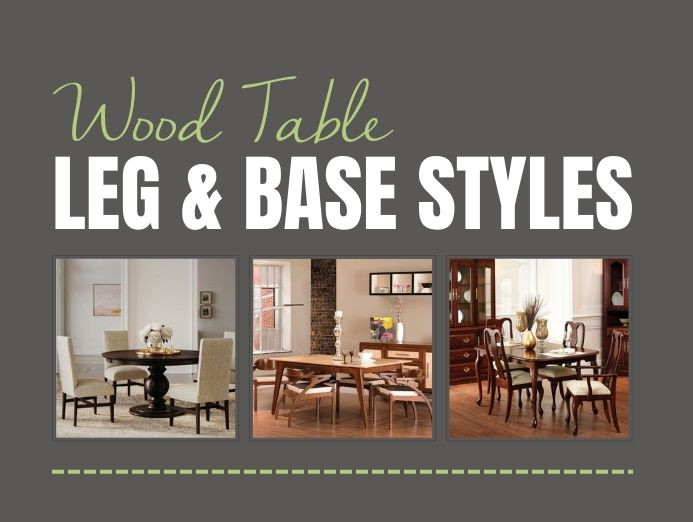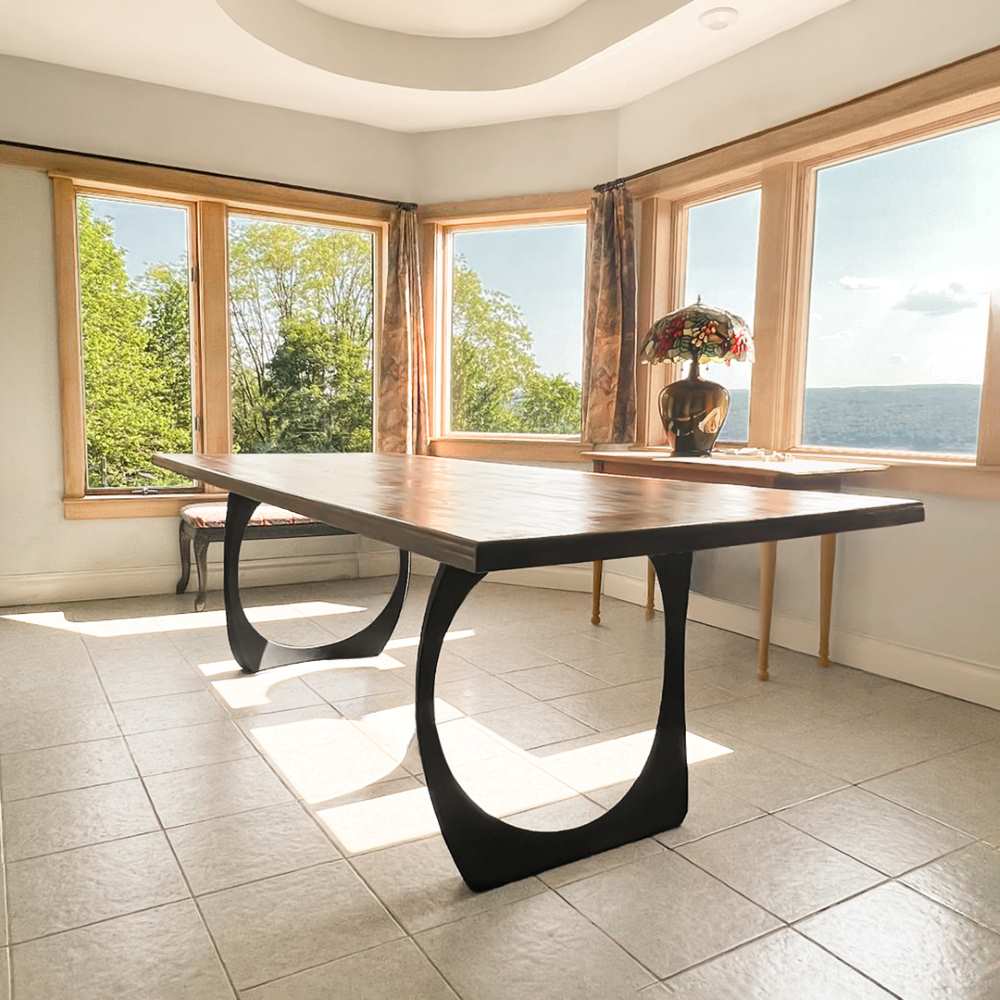How to Maintain and Care for Your Dining Room Table Legs
How to Maintain and Care for Your Dining Room Table Legs
Blog Article
Exactly How to Pick the Perfect Dining-room Table Legs for Your Home Design
Choosing the optimal eating room table legs is a nuanced procedure that needs careful factor to consider of various aspects, including your space restraints, visual choices, and functional requirements. The interaction in between products, styles, and dimensions can dramatically affect the setting of your eating area, making it necessary to approach this choice systematically.
Assess Your Dining Room
Assessing your dining area is essential for choosing the right table legs that match both aesthetics and capability. Begin by gauging the dimensions of your eating area, including ceiling height, flooring room, and closeness to various other furniture. This info will certainly help establish the appropriate dimension and height of your table, which straight influences the option of table legs.
Next, consider the design and format of your dining space. An open-concept layout may benefit from table legs that offer visual agility, such as slim metal or acrylic options. Alternatively, an extra standard setup might call for tough wooden legs that provide a feeling of permanence.
Assess the existing color combination and products in your dining location. Balancing the table legs with these aspects produces a natural appearance that improves the total decoration. In addition, consider the capability called for in your space. If you often organize huge gatherings, think about legs that provide additional assistance and stability.
Eventually, an extensive analysis of your dining room will certainly lead you in making an educated choice, guaranteeing that your table legs not just boost the visual charm but also serve practical functions.
Consider Your Design Preferences
When choosing dining-room table legs, it is necessary to mirror on your individual style choices, as they dramatically influence the total visual of your dining area. Your selection of table legs can either complement or contrast with existing décor, making it important to align them with your recommended indoor layout theme.
If your home leans in the direction of a modern aesthetic, consider sleek metal or minimal wooden legs that supply a tidy, clean appearance. For an extra traditional technique, ornate wood legs with intricate makings can add a touch of beauty and class. Industrial designs gain from robust, basic materials such as redeemed wood and steel combinations, reflecting a rugged appeal.
Furthermore, farmhouse and rustic styles often prefer tough, chunky legs that stimulate a sense of heat and comfort. Alternatively, if your décor is diverse, you could choose non-traditional forms or a mix of products to develop aesthetic passion.

Evaluate Product Options
The choice of material for dining space table legs plays a critical role in both resilience and aesthetic allure. Usual materials include wood, metal, and composite alternatives, each offering distinct characteristics that can influence the general appearance and durability of your table.
Wood is a traditional option, recognized for its heat and flexibility. Hardwoods like oak and walnut YOURURL.com offer exceptional toughness and can be finished in numerous stains to match any type of decoration. Softwoods like yearn are more prone to scrapes and damages, making them much less ideal for high-traffic locations.
Metal legs, typically crafted from steel or light weight aluminum, emanate modernity and commercial beauty. They are very sturdy and resistant to put on, making them ideal for households with kids or constant celebrations (dining room table legs). Additionally, metal can be completed in numerous shades, improving the customization opportunities
Composite products, such as MDF or laminate, deal cost and varied layouts. While commonly much less sturdy than solid timber or metal, they can still give an elegant appearance and are often easy to keep.
Eventually, the material you choose ought to line up with your way of living, aesthetic choices, and the degree of usage your table will certainly experience.
Determine Elevation and Dimension
Selecting the appropriate height and dimension for your dining-room table is necessary for both functionality and convenience. The basic height for eating tables normally ranges from 28 to 30 inches, permitting adequate legroom for the majority of people when seated. Nonetheless, it is essential to consider the measurements of your dining space and the sorts of chairs you prepare to use.

Additionally, take into consideration the percentages of your dining-room. A bigger table in a large area can create a grand atmosphere, while a smaller table functions well in even more intimate settings. Inevitably, the best elevation and size will integrate with your overall decor and boost the dining experience for you and your visitors.
Explore Modification Possibilities

Additionally, the design of the legs can be personalized to fit numerous styles, such as rustic, modern-day, or commercial. Conical legs can stimulate a mid-century contemporary feel, while chunky, block-style legs may resonate with standard or farmhouse decor.
Property owners can additionally explore shade coatings, from natural wood stains to paint, enabling them to match or contrast with the tabletop and surrounding style.
Furthermore, leg elevation can be changed to fit particular seating arrangements or personal choices, boosting both convenience and functionality.
Lastly, one-of-a-kind decorations, such as makings click for source or decorative brackets, can further personalize the table legs, making the dining experience not simply a declaration but a dish piece in the home. By considering these personalization options, homeowners can develop a dining space table that really reflects their individuality.
Final Thought
Picking the optimal eating room table legs needs mindful consideration of numerous factors, including the dimensions of the dining room, style preferences, material durability, and wanted elevation. Personalization alternatives additionally boost the ability to achieve a cohesive visual that matches the overall style. By systematically assessing these components, home owners can guarantee that the chosen table legs not only fulfill functional needs yet also contribute positively to the eating experience and atmosphere of the home.
Picking the suitable dining area table legs is a nuanced process that calls for cautious factor to consider of various aspects, including your area restraints, visual preferences, and functional needs.Evaluating your eating room is vital for picking the right table legs that complement both looks and functionality.When establishing size, determine the area where the table will be put to guarantee it fits comfortably, permitting for at least 36 inches of clearance around the table for very easy activity. A larger table in a roomy location can develop a grand setting, while a smaller table works well in even more intimate settings.Selecting the perfect dining room table legs requires careful consideration of numerous elements, including the dimensions of the dining room, style choices, product longevity, and wanted elevation.
Report this page